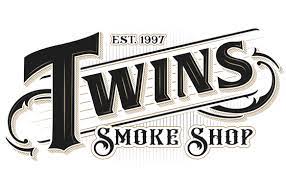-
Shop Twins Cigars Online
- 7-20-4 Lounge
- 7-20-4 BarberShop
- Events
- News
- About Us
- Contact
- Gift Cards
Cigar Prohibition
January 08, 2025
Cigar prohibition and revival refer to periods in history when the consumption and production of cigars faced legal restrictions or societal opposition, followed by renewed interest and resurgence in popularity.
Prohibition Era: In the early 20th century, various countries, including the United States, experienced prohibition movements aimed at banning the production, sale, and consumption of alcohol. While these movements primarily targeted alcohol, tobacco, including cigars, also faced scrutiny from anti-smoking activists.
Anti-Smoking Campaigns: The early 20th century saw the rise of anti-smoking movements, fueled by growing concerns about the health risks associated with tobacco use. Anti-smoking activists campaigned for restrictions on tobacco advertising, smoking in public places, and tobacco sales to minors. Cigar smoking, along with cigarette smoking, was often portrayed as harmful and socially undesirable.
Cultural Shifts: Changing social attitudes towards smoking, coupled with the influence of anti-smoking campaigns, led to a decline in cigar consumption during the early to mid-20th century. Cigar smoking became less common among the general population, although it remained popular among certain segments of society, including aficionados and connoisseurs.
Revival: Despite the challenges posed by anti-smoking sentiments, cigar smoking experienced a revival starting in the latter half of the 20th century.

Several factors contributed to this revival:
- Cultural Reevaluation: As society became more tolerant of personal choices and lifestyles, cigar smoking regained some of its allure and appeal. Cigar smoking became associated with leisure, relaxation, and indulgence, rather than just addiction or habit.
- Cigar Boom: The 1990s saw a resurgence of interest in cigars, often referred to as the "cigar boom." This period was characterized by a surge in cigar sales, fueled by factors such as increased disposable income, celebrity endorsements, and the perception of cigars as luxury items.
- Premiumization: The cigar industry shifted towards premiumization, with a focus on high-quality, handcrafted cigars made from premium tobaccos. Cigar enthusiasts sought out rare and limited-edition cigars, driving demand for luxury cigars with unique flavor profiles and packaging.
- Cigar Culture: Cigar culture flourished in the late 20th and early 21st centuries, with the emergence of cigar bars, lounges, and clubs where enthusiasts could gather to enjoy cigars, share knowledge, and socialize. Cigar events, festivals, and tastings also became popular, further fueling interest in cigars.
While cigar prohibition and anti-smoking campaigns posed challenges to the cigar industry, the revival of cigar culture in recent decades demonstrates the enduring appeal of cigars and the resilience of cigar enthusiasts. Today, cigar smoking remains a cherished pastime enjoyed by millions of people around the world.
Also in News
Follow
Twins Smoke Shop - Londonderry
80 Perkins Rd, Londonderry, NH 03053
(603) 421-0242
7-20-4 Lounge
80 Perkins Rd, Londonderry, NH 03053
(603) 421-0242
Follow 7-20-4 Lounge on Instagram
7-20-4 Barbershop
80 Perkins Rd, Londonderry, NH 03053
(603) 421-0242
Follow 7-20-4 Barbershop on Instagram
Twins Smoke Shop - Hooksett
9 W Alice Ave, Hooksett, NH 03106
(603) 421-0242
- Locations
- About Us
- Blogs
- Contact
- Gift Cards
- Refund Policy
- Shipping Costs & Policy
- Privacy Policy
- Terms of Service
Stay In The Loop...




